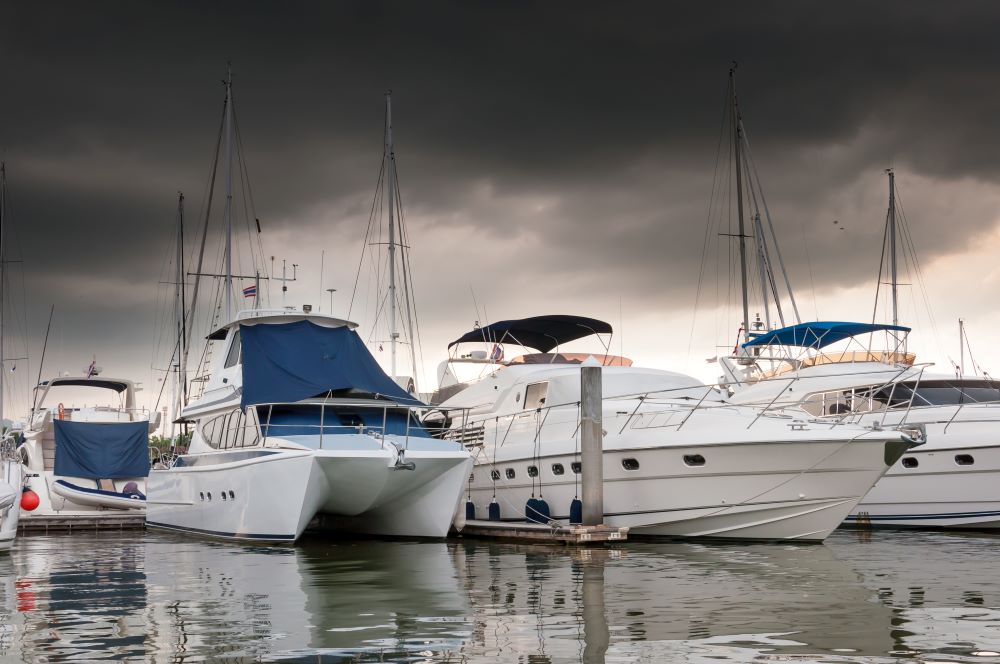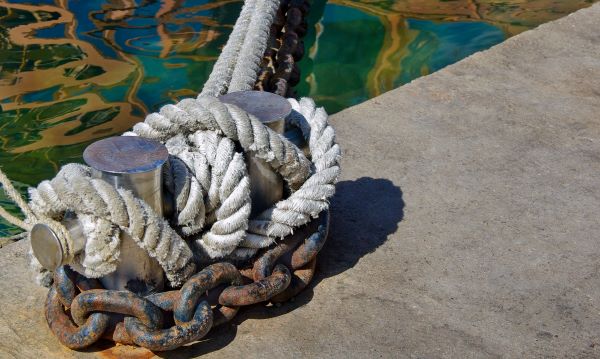Tropical Storm Isaias served as a vivid reminder that hurricane season is underway in the Gulf and Atlantic Seaboard states. The good news is that the National Hurricane Center and your local news outlets usually can give you a few days’ advance warning of any approaching tropical storm. But before the next major storm blows in, now is an ideal time to make or review your hurricane plan to safeguard your boat from harm.
Insurance is the Best Policy
Repairing or replacing boats and engines damaged by hurricane winds or floodwaters can be far more expensive than the cost of an annual marine insurance policy. If your boat is uninsured, consider purchasing coverage now. If you already have boat insurance, review the policy’s storm requirements carefully. Some insurance providers require that the boat be moved out of state during hurricane season. Most ask for a formal written storm plan detailing where and how your boat will be secured during a major storm. Designate a responsible person to carry out the plan in case you are out of town when a hurricane is in the forecast.
 Determine Where Your Boat Will Ride Out the Storm
Determine Where Your Boat Will Ride Out the Storm
Check with your marina, rack-storage facility or the owner of the private dock where your boat is tied up to be sure it can stay there during a hurricane. If not, you might need to find a boatyard that will store it on land until the storm passes. Some yards even sell “Hurricane Haul-Out” reservations in advance. If you can leave your boat where it is, ask management about the procedure for securing your vessel and any docked or stored around it, since a boat that breaks free in a hurricane might end up damaging your boat.
Make an Inventory of Valuables Onboard
Many of today’s boats are rigged with navigation and fish-finding electronics worth thousands of dollars. Make a record, preferably by video, of all the valuable equipment you can’t take off the boat. When a major storm threatens, remove the boat’s documents, including your marine insurance policy, from onboard and store them in a secure place along with the inventory.
Three Days Before the Storm...
Monitor the storm’s track. A few days before it is likely to hit your area, if your boat is trailerable, move it to a safe location inland. Don’t wait until the last minute, as everyone will have the same idea. Whether you’re planning to keep the boat on land or leave it in the water, if it’s going to be outside during the storm, remove all detachable items, such as canvas, cushions, fishing gear and rigging, portable electronics, antennae, coolers and dinghies from its decks. Remove small outboards and store them in a safe place. Disconnect the batteries. If the boat is in a marina with shore power, be sure the power is shut off and your shore power cord is stowed securely.
 Double up All Lines or Tie-downs
Double up All Lines or Tie-downs
If your boat is in a marina, center it in its slip. Double up all dock lines, add extra spring lines fore and aft, and make sure all your lines are long enough to compensate for any high-water surges caused by the storm. Cover the lines where they feed through chocks or hawseholes to prevent chafing. Put out extra fenders. Boats at anchor are safest in a narrow canal or “hurricane hole.” Set extra anchors to be sure all wind angles are covered, and make sure that if your boat swings it won’t hit any other boats anchored nearby. Replace worn anchor rodes and rusted anchor chains. If you’re securing your boat on its trailer, use extra tie-downs to anchor the vessel to the trailer, let the air out of the tires and weigh down the frame.
The most important hurricane-preparedness tip of all is this: Do not try to ride out a storm onboard. No matter how much you love your boat, it’s not worth risking your life. That’s what marine insurance policies are for.

